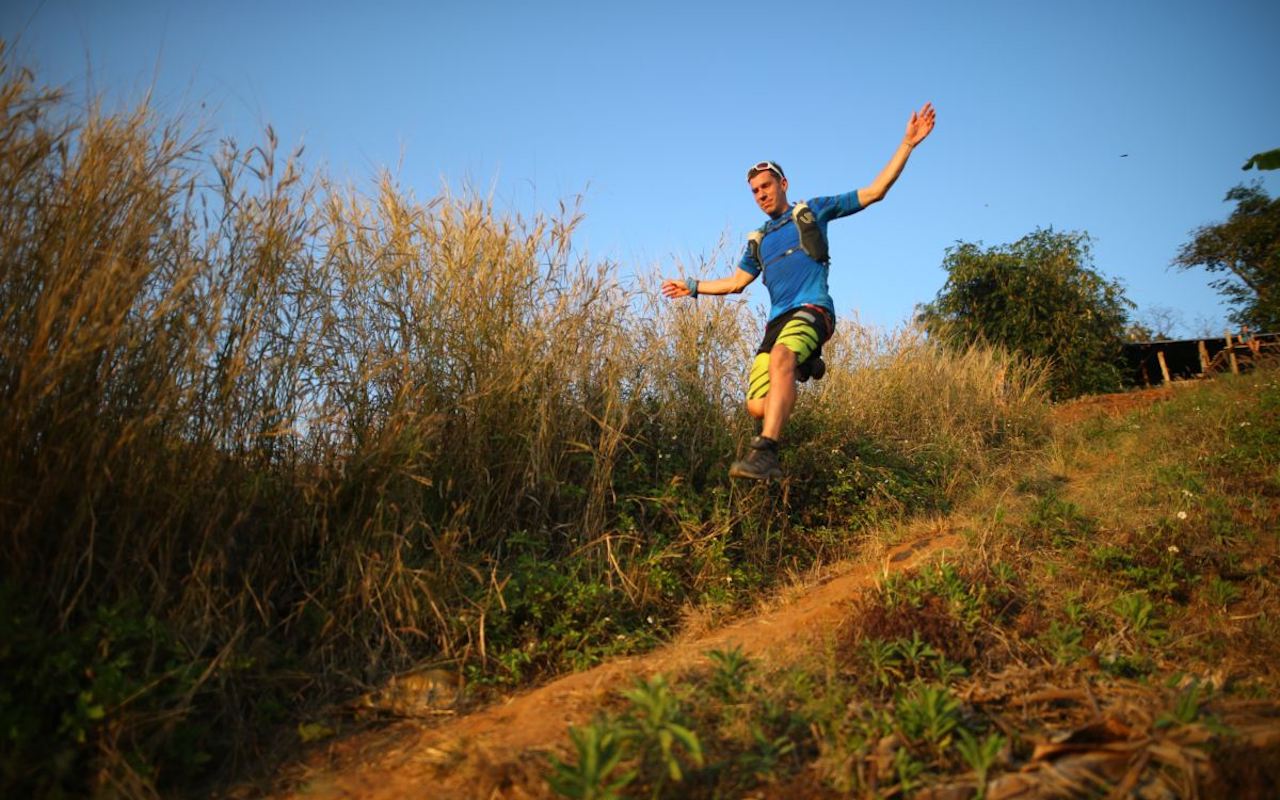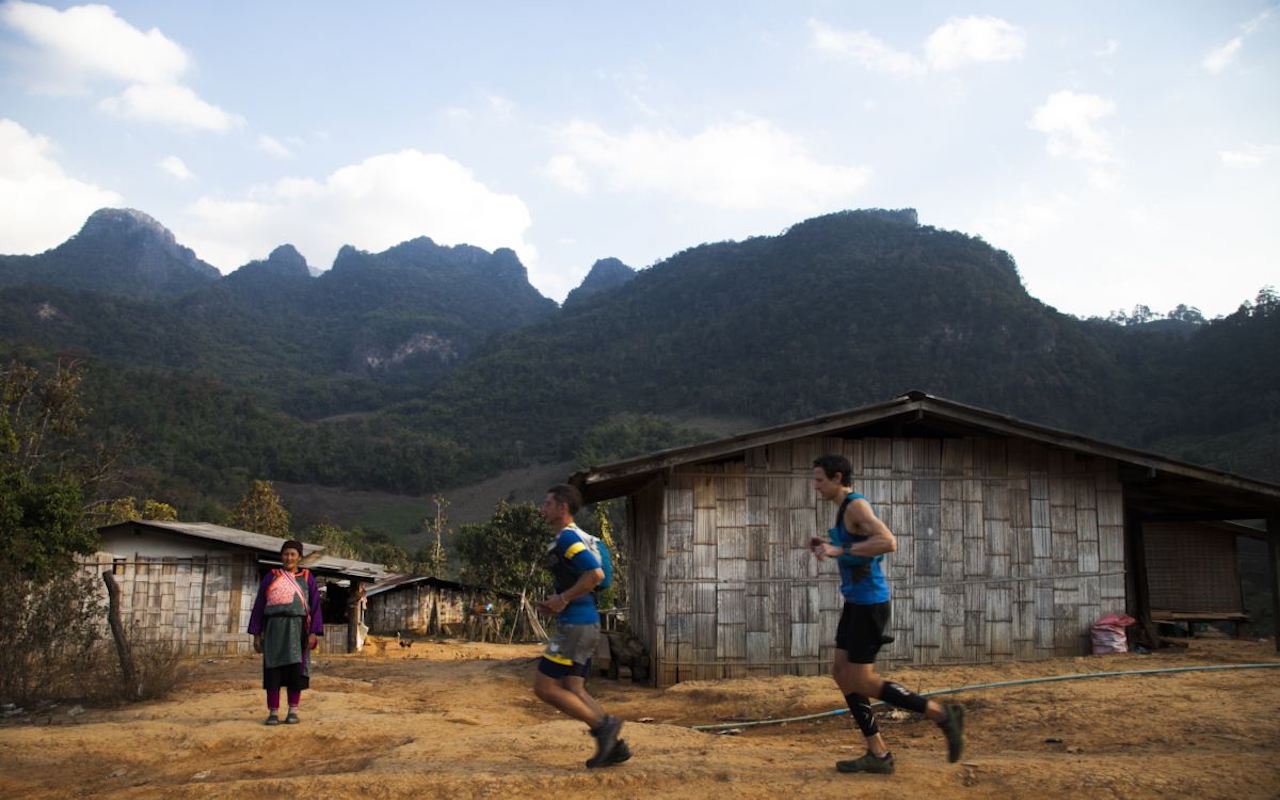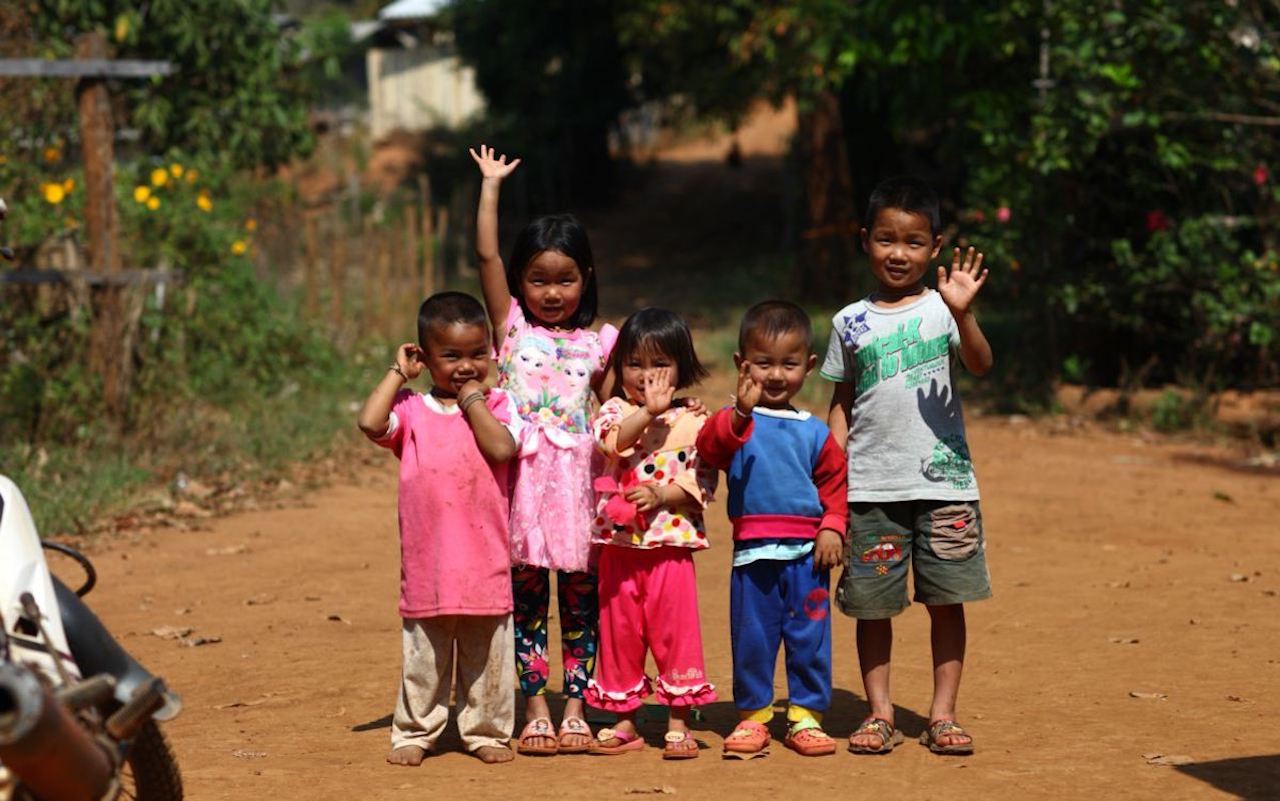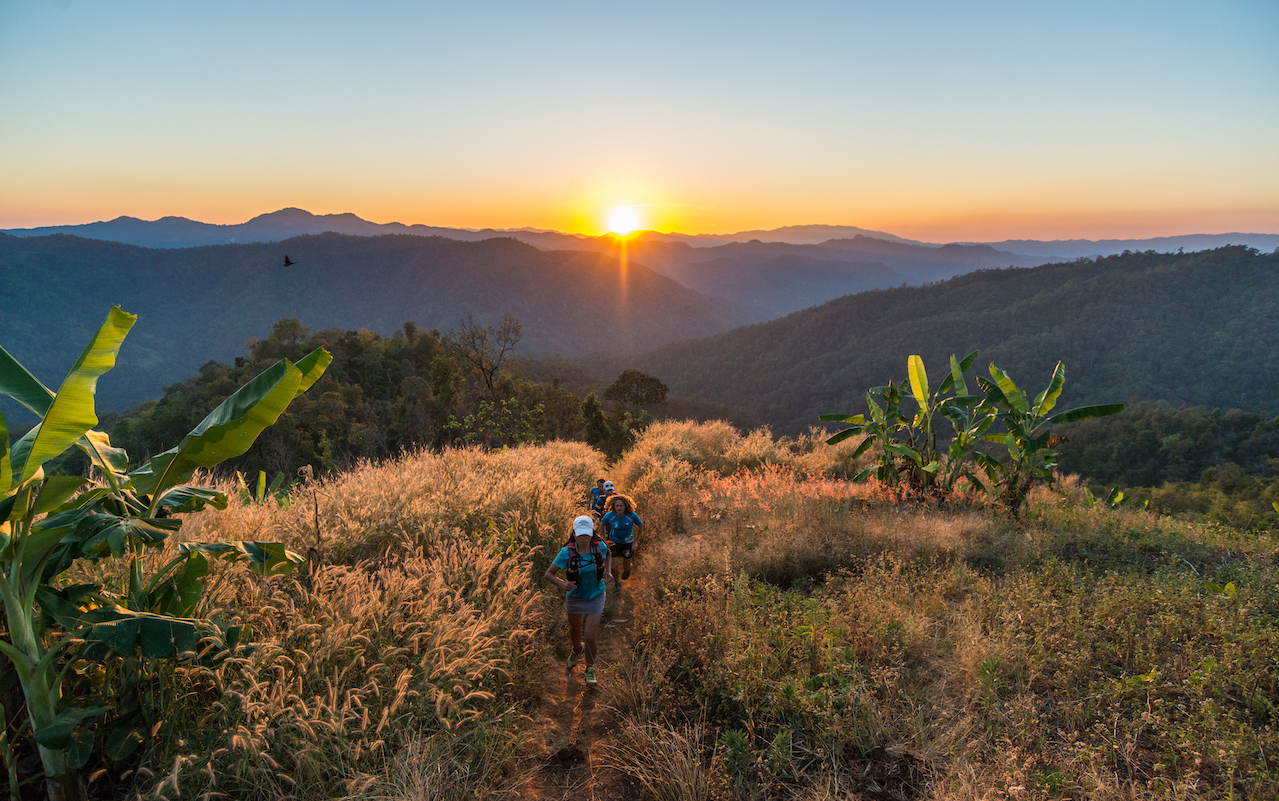
It’s 6am on the second day when the scale of what we’re about to do really sinks in. We’re clambering down from our stilted, thatched hut in Kup Kap, a Lahu tribal village in Northern Thailand, perched 1,100m above the surrounding valley. The sunrise is spectacular, but our legs ache from the previous day’s effort. The knowledge of what’s to come clouds the dawn light with nervous anticipation.
We’ve already run, hiked and scrambled over 30km, ascending more than 2,000m across tree roots, through river beds and up slippery leaf-strewn slopes. We are tired but there’s another 30km and a succession of intimidating peaks to conquer today. Yet, between the physical effort required to pull this off and the sheer beauty of our surroundings, it’s clear why this part of Thailand is proving such a draw for trail runners.

Three of us – myself, local trail enthusiast Channada Chananoi and Singapore-based runner Scott Pugh – are in the mountains north of Chiang Mai, trying to keep up with Sébastien Bertrand, the enigmatic French guide behind tour agency Thailand Mountain Trail. These are the farthest foothills of the Himalayas, a haven for wildlife and home to numerous hill tribes, and yet these wild and remote footpaths see next to no visitors. It’s a stunning two-day route, which sees us start deep in the jungle, climb past coffee plantations and then track a ridgeline thick with cherry blossom down towards the border with Myanmar, finishing the run surrounded by towering limestone peaks. It’s by no means easy going and we’d be utterly lost without our guide.
Bertrand, solidly-built and with close-cropped hair, bounds uphill with the enviable ease of someone who spends most of his days in these mountains. The 44-year-old moved to Thailand six years ago, having grown up in Annecy, France, where he worked as a product manager for outdoor brand Columbia.

By his own admission, he came to Thailand with “big plans and some ego” and threw himself headfirst into what proved to be a mammoth undertaking: connecting the trails between Chiang Mai and Chiang Rai, in the hope of establishing Thailand’s first long-distance footpath, akin to the Grande Randonnée (GR) routes of Europe. It was a project that took him nearly a year and, when completed in late 2013, the route – which he marked with now-faded orange rags tied to trees – extended across 350km (by comparison, a journey by road between the two towns is less than 200km). Because this had never been attempted before, there were no guides who could show him the way. Indeed the route didn’t exist, except in his mind. “What he did was crazy,” says Pim, one of the residents of Kup Kap, “[But now] he knows these mountains better than I do.”
Historically, the tribes who live here used footpaths to travel between the neighbouring villages but with the advent of dirt roads and motorcycles, these old ways were fast becoming lost to memory. “The old villagers still know the trails,” Bertrand says. “But they weren’t in any kind of shape to show me. And the young people just don’t know the way.” Moreover, the paths were only ever intended for short journeys and had never been linked together in this way before. Bertrand had to create the whole route step by step.
That meant bushwhacking through thick jungle, scouring out-of-print army maps and Google Earth, tracking rivers and sometimes simply guessing where the trail might be. It was a slow and painful process, one Bertrand undertook largely solo, often getting lost and relying on his head torch to find his way back after dark. While his wife, Rattana Chomphuphan, came with him for some of the early reconnaissance, it’s clear this was an intensely personal project. “You decide to make some changes in your life and follow your own adventure.” He adds, “Of course, at the start maybe you don’t realise it will be so complicated.”

He shares his story gradually, in the all-too-infrequent stops to catch our breath at the scattered villages along the way. Some are tiny – a handful of homes perched on a ridgeline – others, particularly when we drop down into a valley, stretch for a mile or more and include schools and churches. Our welcome at each village is invariably warm – the local residents now know Bertrand well, and he employs some of them to dig out steps and keep the trails clear. Chan Chai, the forty-something assistant head of the Hmong village of Pakhia, explains they are happy to see foreigners running here. “We’re proud that people from all over the world now come to our village,” he says.
It’s a fascinating, accelerated lesson in the history of the region as we run between villages that are variously home to Hmong, Lahu and Lisu tribes – people from China, Myanmar and Laos who long ago settled in these mountains. They’re clearly bemused by what we’re doing but happy to indulge us all the same. “Nobody here has ever run so far,” Lisu villager Asama tells us as we take a break in the middle of his village. “But we can understand why you like being out in nature.”
While traditional dress and the old ways of life may be declining, people here continue to live from the land. On our first night, we eat a simple, locally grown dinner in the home of a local Lahu family – chicken curry, vegetable soup, crispy khai jiao (Thai-style omelette) and helping upon helping of rice, a much-needed refuel after a long, tiring day.

Once he had finally connected and marked the route he’d set out to find, Bertrand invited a group of high-profile Asian ultra-trail runners, including Singapore’s Jeri Chua (founder of Red Dot Running Company) and Janet Ng (race director of the ultra-endurance race, Hong Kong 100) to run the entire route over a week. “We had some surprises,” he shares. For example, a trail in the dry season looks very different in November after the rains. “It was very wild in places. I carried a machete to cut through the bamboo, but by the end, my legs were devastated.”
For most people, the idea of covering such a long arduous route on foot, let alone attempting it in seven days, will seem like madness. But to a sub-set of runners, pushing the boundaries of the possible is a big part of the appeal. Ultra-endurance (any distance longer than a marathon) events aren’t new, but have exploded in popularity in recent years, particularly after the success of Christopher McDougall’s 2009 book, Born to Run. Trail running, meanwhile, is one of the world’s fastest-growing sports (according to a Statista report, recorded participation in the US grew from 4.5 million runners in 2006 to more than 9 million by 2017) and is increasingly popular across Asia, with a year-round race calendar. In fact, Bertrand had plans to stage a 100-mile race with a view to becoming part of the Ultra-Trail World Tour, but was never able to get the necessary permissions. Instead, he decided to showcase what he’d found to anyone keen to push themselves that little bit harder.

Bertrand is not alone when it comes to falling in love with the wilder side of Chiang Mai. The city is now awash with trekking and adventure agencies and is fast becoming the de facto capital of trail running in Thailand. Enthusiasts from around the world fly in for trail running retreats and there’s also a passionate local community centred around Basecamp Coffee House at the foot of the 1,600m-high Doi Suthep.
The appeal can be hard to explain but our group is clearly smitten and, over dinner that first day, we talked about what drew us here. For Chananoi, it’s a way of discovering “some very special places”, the pleasure of linking two distant locations in a single push and truly “earning the views”. For Pugh, it’s the endorphin high that comes with pushing your body to exhaustion, of “finding out what I’m capable of”.

The giddy sensation of flying down a pine- cushioned, single-track downhill trail, as we’ve just done, is hard to beat. It’s what writer David Foster Wallace – in a different context – called “kinetic beauty… human beings’ reconciliation with the fact of having a body”. There’s something deeply primal and satisfying about moving fast over difficult terrain. And having pushed ourselves so hard for so long, even the simplest of things – the cold outdoor shower before bed, our hosts offering us coffee when we stumble down the next morning – feel newly meaningful.
Halfway up the steepest ascent on day two, we reach a break in the trees and stop to regroup. For the first few minutes, we’re just breathing heavily. On one hand, it’s a ridiculous sight – four city folks sweating and struggling up a remote hillside. Yet, as our heart rates settle and our breathing slows, the beauty of the landscape stretched before us becomes apparent. As we drink in the majestic surroundings, it’s hard to think of anywhere we’d rather be.
Feature image by Charnchanut Charujinda
SEE ALSO: 5 of the most scenic running and cycling trails to tick off your bucket list
This article was originally published in the April 2019 issue of Silkwinds magazine
The post These forgotten mountain paths in Northern Thailand is every trail runner’s dream appeared first on SilverKris.
from SilverKris
No comments:
Post a Comment